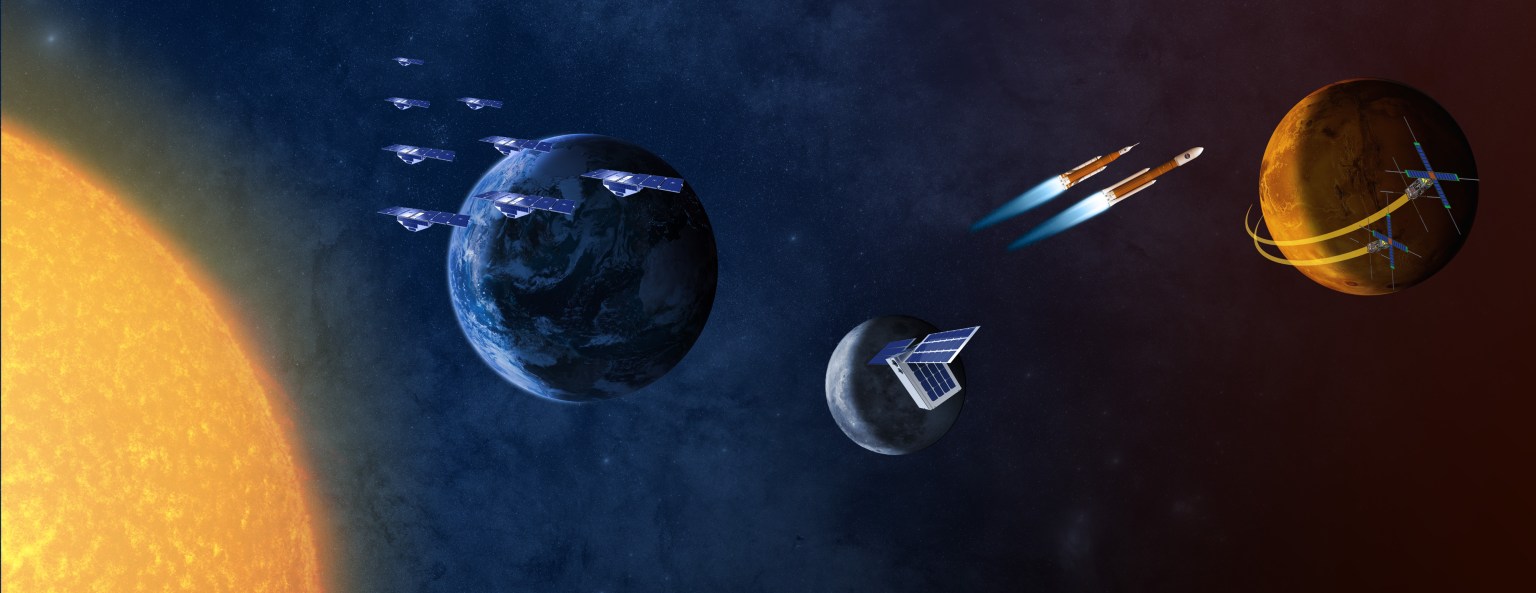Small Spacecraft Community of Practice
Subscribe to receive announcements for the Small Spacecraft Systems Virtual Institute’s (S3VI) monthly webinar series and quarterly newsletter here. We look forward to your participation!

The Challenges of Managing Small Space Flight Projects
Speaker: Butler Hine, NASA Ames Research Center
Wednesday, July 14, 2021
10:00AM-11:00AM Pacific Daylight Time
Click here to watch the webinar.
Click here to download the presentation.
Abstract: NASA Flight Projects range from enormous flagship missions that cost multi-$B down to CubeSat technology demonstration missions that cost less than $100K. All of these projects have aspects in common and aspects that are very different. NASA has steadily been moving from a one-size-fits-all approach to flight projects towards allowing a significant range of risk postures, processes, and mission assurance. This talk will go over the common aspects of all flight missions, and the particular challenges of managing small, low-cost missions with limited resources. We will try to answer the question of which types is harder to manage (and the answer may surprise you).
Bio: Dr. Hine is an active space flight project manager, and recently served as the acting Director for Programs and Projects at NASA Ames Research Center. He is currently the Project Manager for the HelioSwarm mission, which will lead to understanding the cascade and dissipation of energy in turbulent magnetized plasmas by using a novel swarm of spacecraft to investigate the physics of turbulence. Another of his current missions in concept development is Arcus, which is a soft X-ray spectroscopy mission designed to study gamma-ray and X-ray emissions from clusters of galaxies and neutron star systems. He was previously the Project Manager for the LADEE mission, a Lunar science orbiter which launched in 2013 and successfully completed its mission in 2014. LADEE measured Lunar dust and examined the Lunar exosphere near its pristine state, prior to future significant human activity. LADEE also tested an optical communications payload from the Moon, which is an important technology enabling high-bandwidth communications links for future planetary missions. Prior to this, Dr. Hine managed the Small Spacecraft Division at NASA ARC, which developed ways to build low-cost, high-performance spacecraft to enable future NASA missions. He has also managed various NASA programs, such as the Robotic Lunar Exploration Program, the Computing, Information, and Communications Technology Program, and the Intelligent Systems Program. His earlier NASA career includes directing the Intelligent Mechanisms Laboratory at NASA Ames Research Center, which pioneered the use of telepresence and virtual reality to control remote science exploration systems. Outside of NASA, Dr. Hine was President and CEO of a software start-up company which developed advanced visualization tools for managing large corporate networks.
Butler Hine received his Bachelor of Science degree in Physics and Mathematics, summa cum laude, from the University of Alabama in 1981, and Masters and Doctorate degrees in Astronomy from the University of Texas in Austin in 1985 and 1988, respectively.
His background includes work in spacecraft design, flight software and avionics, information systems, radio and optical astronomy, optical instrumentation, machine vision, robotics, and information visualization. His research interests include low-cost spacecraft designs, avionics architectures, embedded systems, space telerobotics, image processing, machine vision, and 3D visualization.
He has published over 70 journal and conference papers in the areas of spacecraft design, astronomy, optical instrumentation, machine vision, robotic planetary exploration, and 3D visualization.
He is a commercial multi-engine pilot. Besides flying, his hobbies include camping, martial arts, and scuba diving.
S3VI encourages the community to submit questions before the webinar to enable more directed responses. Please send questions to raquel.l.redhouse@nasa.gov.





























